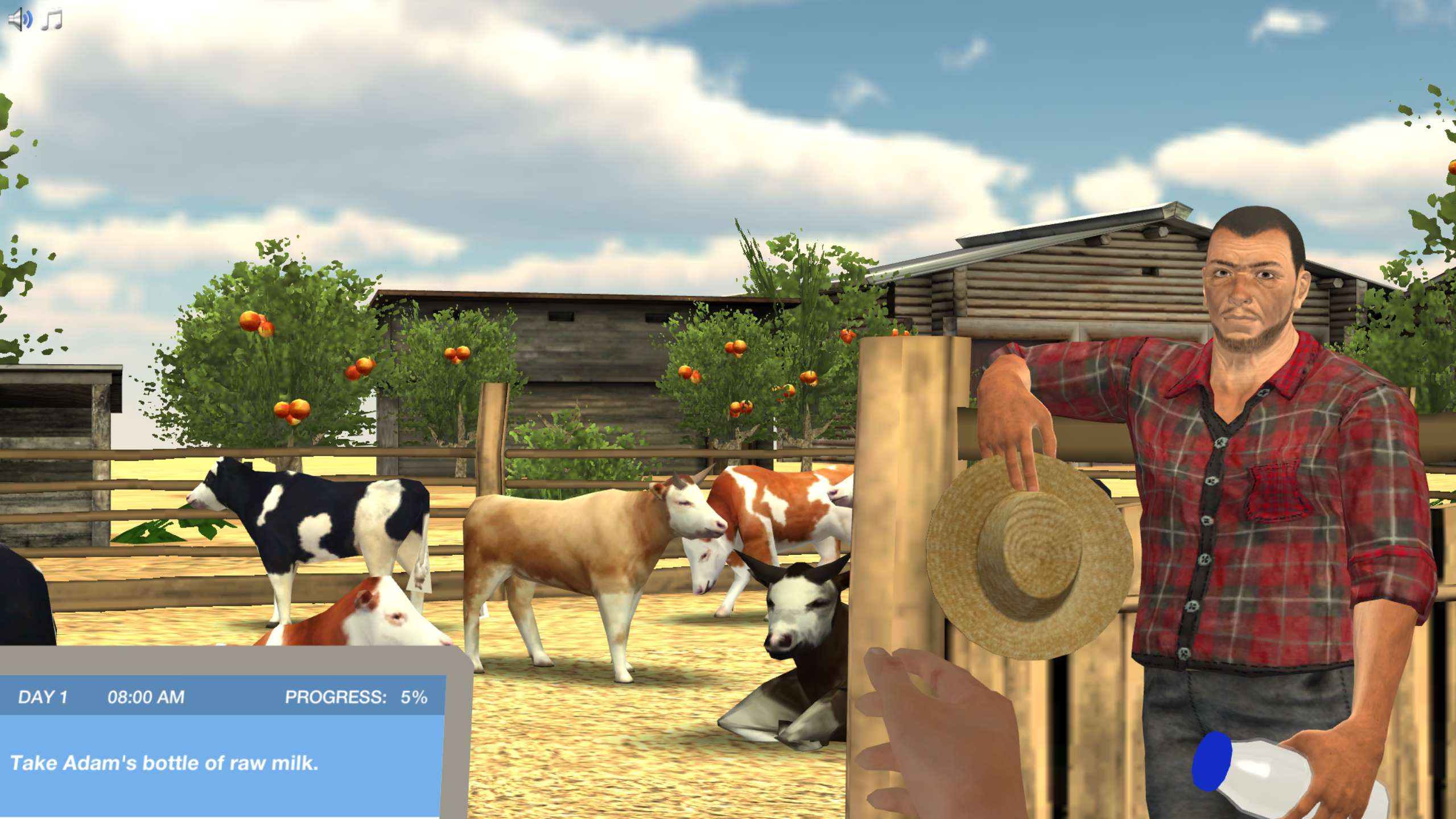Heading 1
Heading 2
Heading 3
Heading 4
Heading 5
Heading 6
Lorem ipsum dolor sit amet, consectetur adipiscing elit, sed do eiusmod tempor incididunt ut labore et dolore magna aliqua. Ut enim ad minim veniam, quis nostrud exercitation ullamco laboris nisi ut aliquip ex ea commodo consequat. Duis aute irure dolor in reprehenderit in voluptate velit esse cillum dolore eu fugiat nulla pariatur.
Block quote
Ordered list
- Item 1
- Item 2
- Item 3
Unordered list
- Item A
- Item B
- Item C
Bold text
Emphasis
Superscript
Subscript
About This Simulation
Help Adam the farmer grow his milk business by exploring the basic concepts of homogenization, a standard procedure in milk processing.
Learning Objectives
- Identify the different types of mixtures present in food
- Understand the role of emulsifiers
- Explain the molecular structure of milk
- Describe the steps of homogenization and how a homogenizer works
About This Simulation
Lab Techniques
- Homogenization
Related Standards
- No direct alignment
- No direct alignment
- Biology D.1 Human nutrition
Learn More About This Simulation
Dairy products are very common in your daily life, but do you know how they are made? In the Homogenization simulation, help Adam the farmer to improve his milk business and learn about the different processes needed to manufacture dairy products - from raw milk to the supermarket.
Introduction to mixtures
Did you know that milk is a mixture of water, fat globules, and protein micelles? Before you start the process of homogenization, you will be introduced to different kinds of mixtures that you can find in foods, such as colloids and emulsions. In this simulation, you will take a microscopic look at a drop of milk and discover its structure. By doing so, you will observe what makes processed commercial milk different from raw milk.
The milk homogenization process
Once you understand the basics of mixtures, colloids, and emulsions, you are ready to perform homogenization. In this simulation, you will use a portable homogenizer based on a 2-step homogenization. You will take samples to analyze under the microscope, and compare the differences between particle sizes of raw milk and milk that is homogenized at different steps of the process. To better understand the mechanics of the homogenizer, immerse yourself in 3D animations showcasing the main pistons and valves that make the machine work.
At the end of the simulation, you will meet Adam again and tell him all about your newly-acquired knowledge of milk homogenization. Will you be able to help him understand the concept of homogenization to improve his business and provide tasty milk to more people?
For Science Programs Providing a Learning Advantage
Boost STEM Pass Rates
Boost Learning with Fun
75% of students show high engagement and improved grades with Labster
Discover Simulations That Match Your Syllabus
Easily bolster your learning objectives with relevant, interactive content
Place Students in the Shoes of Real Scientists
Practice a lab procedure or visualize theory through narrative-driven scenarios


FAQs
Find answers to frequently asked questions.
Heading 1
Heading 2
Heading 3
Heading 4
Heading 5
Heading 6
Lorem ipsum dolor sit amet, consectetur adipiscing elit, sed do eiusmod tempor incididunt ut labore et dolore magna aliqua. Ut enim ad minim veniam, quis nostrud exercitation ullamco laboris nisi ut aliquip ex ea commodo consequat. Duis aute irure dolor in reprehenderit in voluptate velit esse cillum dolore eu fugiat nulla pariatur.
Block quote
Ordered list
- Item 1
- Item 2
- Item 3
Unordered list
- Item A
- Item B
- Item C
Bold text
Emphasis
Superscript
Subscript
A Labster virtual lab is an interactive, multimedia assignment that students access right from their computers. Many Labster virtual labs prepare students for success in college by introducing foundational knowledge using multimedia visualizations that make it easier to understand complex concepts. Other Labster virtual labs prepare learners for careers in STEM labs by giving them realistic practice on lab techniques and procedures.
Labster’s virtual lab simulations are created by scientists and designed to maximize engagement and interactivity. Unlike watching a video or reading a textbook, Labster virtual labs are interactive. To make progress, students must think critically and solve a real-world problem. We believe that learning by doing makes STEM stick.
Yes, Labster is compatible with all major LMS (Learning Management Systems) including Blackboard, Canvas, D2L, Moodle, and many others. Students can access Labster like any other assignment. If your institution does not choose an LMS integration, students will log into Labster’s Course Manager once they have an account created. Your institution will decide which is the best access method.
Labster is available for purchase by instructors, faculty, and administrators at education institutions. Purchasing our starter package, Labster Explorer, can be done using a credit card if you are located in the USA, Canada, or Mexico. If you are outside of North America or are choosing a higher plan, please speak with a Labster sales representative. Compare plans.
Labster supports a wide range of STEM courses at the high school, college, and university level across fields in biology, chemistry, physics, and health sciences. You can identify topics for your courses by searching our Content Catalog.















